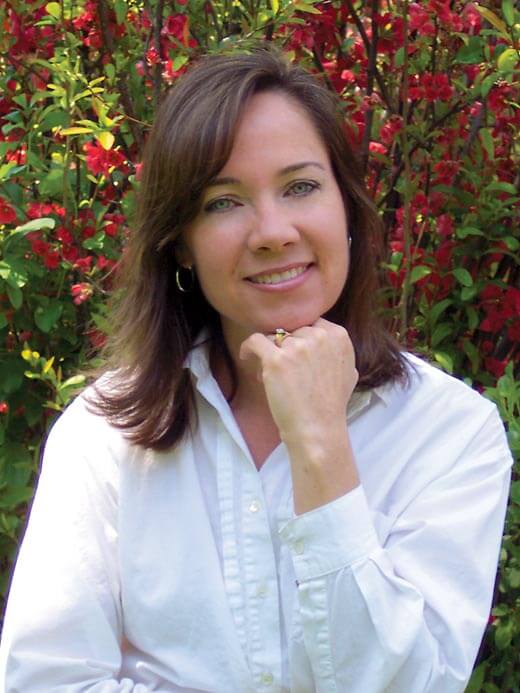 This month’s author interview is with Suzanne Slade, the proud owner of Corduroy, a Yorkie considered by many to be the Cutest Dog in the World. While I had hoped to steer every question in this interview toward getting to know more about this amazing pooch, Suzanne wanted to also talk about picture books. So that’s what we have for you this month.
This month’s author interview is with Suzanne Slade, the proud owner of Corduroy, a Yorkie considered by many to be the Cutest Dog in the World. While I had hoped to steer every question in this interview toward getting to know more about this amazing pooch, Suzanne wanted to also talk about picture books. So that’s what we have for you this month.
And yes, Suzanne DOES write some amazing kidlit. Here are a few of my favs of her 100+ published titles.
So let’s get into the nitty-gritty and ask Suzanne some questions about how she made it all happen. And maybe we’ll sneak in a Yorkie-adjacent question or two, as well. 🙂
Website: www.suzanneslade.com
Facebook: www.facebook.com/suzanne.b.slade
Twitter: www.twitter.com/AuthorSSlade
Goodreads: www.goodreads.com/author/show/1044563.Suzanne_Slade
RVC: So you went to college to study mechanical engineering. After graduation, you worked on car brakes as well as Delta and Titan rockets. How did you go from that exciting life–plus mom-ing–to being a published picture book author?
SS: Actually, it was while “mom-ing” that I started reading stacks of picture books to my two small children. That picture book immersion (and perhaps my lack of adult interaction), led to my interest in writing picture books. Now, learning the craft of writing picture books and getting published was quite another experience. It took 8 years of solid rejection letters before receiving my first book contract. During that time I took writing classes, joined several critique groups, and attended many SCBWI conferences and events.
RVC: What was the most important thing you learned about writing salable picture books in those early-career years of hard work and practice?
SS: My first book contract that took eight years to obtain was actually a work-for-hire project with an educational publisher. It took several more years to get my first picture book contract. There are many “important things” that lead to a “salable picture book.” But if I had to pick just one, I guess it would be giving your book topic a great deal of thought before spending too much time on research and writing. I learned the hard way that if the topic of the story wasn’t “salable” (one with broad interest to many readers that wasn’t already covered in other picture books), it really didn’t matter how good the writing was. During most publisher acquisitions meetings, the marketing team evaluates the sales potential of the book’s topic, which is key to a publisher deciding to purchase a book.
RVC: History is full of fascinating people, ideas, happenings, and subjects. How do you know that X is going to work as a picture book? Can anything work as a picture book, really?
SS: When contemplating a new picture book idea, I consider if the topic is: interesting (to me and to children), appropriate for the grade school crowd, if there are other picture books on the topic already, available sources, and if I have a unique angle or fascinating, little-known fact about the topic to share. If those items check out, then I think the topic will work as a picture book. Though there are picture books on a variety of topics (from pizza to pirates to Pluto), I think there are many subjects that wouldn’t work for a picture book.
RVC: What makes nonfiction topics like music, cars, and space come alive on the pages of a picture book?
SS: Whoa, big question! I think many factors lead to a compelling nf picture book such as a cohesive story thread, an interesting, non-traditional beginning, and sharing fascinating, little-known facts about famous events or people. Conveying information in an engaging way, perhaps through alliteration, unusual descriptive words, or strong verbs are great ways to help liven up a story. Of course, active, colorful illustrations are key to making a story come alive to the reader, so I’m always grateful to my illustrators who work so hard to create stunning, accurate artwork for my nonfiction topics.
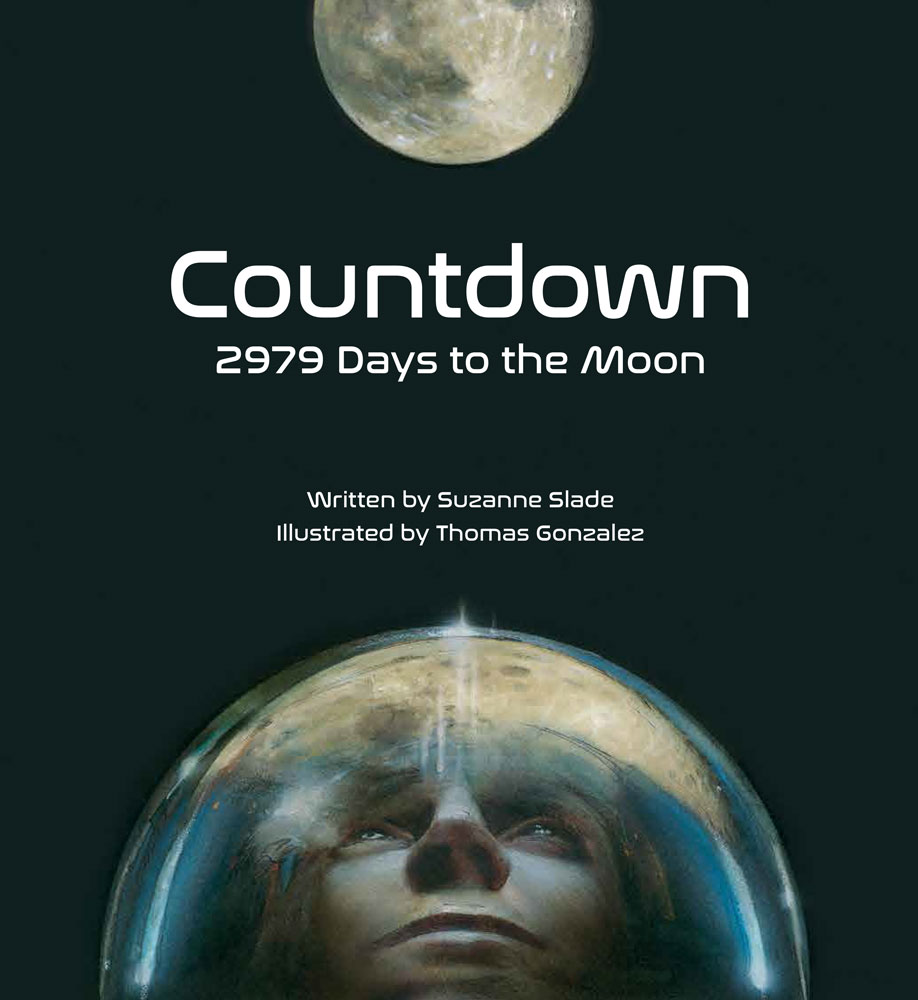 RVC: Let’s talk about writing in verse, which you’ve done in books such as Countdown: 2979 Days to the Moon. How does the decision to write in verse come about? What do you think verse adds to a story?
RVC: Let’s talk about writing in verse, which you’ve done in books such as Countdown: 2979 Days to the Moon. How does the decision to write in verse come about? What do you think verse adds to a story?
SS: This may sound strange, but I didn’t decide to write Countdown in verse. The story made the decision. After years of research on the project, I finally decided it was time to start writing. When I sat and began writing Chapter 1, the words came out in short, powerful lines. The text felt tense and urgent, just like the events they were describing. So I kept writing in free verse.
RVC: Along with seven other authors and illustrators, you’re part of the Picture Book Builders blog. What do you find most rewarding from your participation there?
SS: I love reading the other authors and illustrators insights about the picture book gems they share. There are so many wonderful books releasing all the time, so it’s hard to keep up. Picture Book Builders helps me stay current with the newest and best picture books.
Also, the blog posts often share wonderful “insider” interviews with the creators who work so hard to make these fantastic books.
RVC: I’m a fan of your book Dangerous Jane. What was the biggest surprise for you from your research for that book?
SS: Before I’d thought of writing Dangerous Jane, I accidentally stumbled upon my “biggest Jane Addams surprise”—she was the first American woman to win the Nobel Peace Prize. I’d always admired how Jane founded Hull House to help struggling Chicago families, but had never heard of her peace work. Unfortunately, it seems few people know about Jane’s tireless work for peace. So I decided to write Dangerous Jane to share how this amazing woman who helped Chicagoans in need, also bravely fought to end World War I and bring peace. Ironically, the FBI named Jane “The Most Dangerous Woman in the America” (find out why in Dangerous Jane,) but she just continued helping others and was later awarded the Nobel Peace Prize!
RVC: The other day, I was in Ft. Myers, Florida at the Edison and Ford Winter Estates, and there in the guest-house-turned-gift-shop, I saw a copy of The Inventor’s Secret prominently displayed. (Sidenote–when asked, the employee said it was a top-selling title there.) Why do those two historical figures belong in the same book?
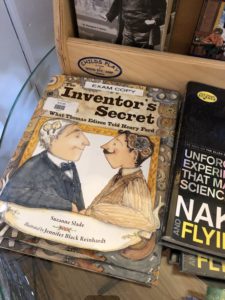 SS: Edison and Ford were both passionate about creating contraptions that made life easier for people and were good friends. Early on, Edison had many successful, ground-breaking inventions, while Ford struggled to design his gas car. So a frustrated Ford decided to meet Edison and find out his inventing “secret.” After meeting, the curious inventors became friends. They went on camping trips together and purchased the adjacent Florida homes you visited. I also visited the Edison and Ford Winter Estates as a part of my research for The Inventor’s Secret (which the curator of the museum at the time, Alison Giesen, helped vet.)
SS: Edison and Ford were both passionate about creating contraptions that made life easier for people and were good friends. Early on, Edison had many successful, ground-breaking inventions, while Ford struggled to design his gas car. So a frustrated Ford decided to meet Edison and find out his inventing “secret.” After meeting, the curious inventors became friends. They went on camping trips together and purchased the adjacent Florida homes you visited. I also visited the Edison and Ford Winter Estates as a part of my research for The Inventor’s Secret (which the curator of the museum at the time, Alison Giesen, helped vet.)
RVC: You’ve had some good news recently about your new book, A Computer Called Katherine: How Katherine Johnson Helped Put American on the Moon (released March 12th).
SS: You’re right! Two exciting things have happened with that book. The illustrator, Veronica Miller Jamison, did a fine NPR interview about it. And I was invited to speak about that book on ABC’s Windy City Live.
RVC: Congrats with all that. And since we started the serious part of this interview with rockets, let’s end it with rockets too. You recently had a super-cool writer and rocket connection …
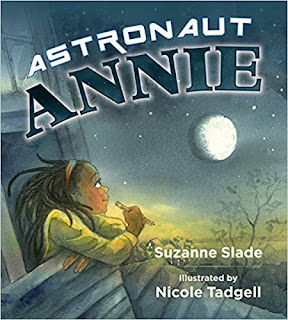 SS: My book, Astronaut Annie, is blasting off on a SpaceX rocket on April 25 for the International Space Station where it was read by an astronaut for the Story Time from Space program!
SS: My book, Astronaut Annie, is blasting off on a SpaceX rocket on April 25 for the International Space Station where it was read by an astronaut for the Story Time from Space program!
RVC: What great news! But now it’s time for the Lightning Round! Zaptastically quick answers, please. Which of your many pets is most likely to have a secret plan for world domination?
SS: My 8‑pound yorkie, Corduroy. (He already dominates our home.)
RVC: If you were a book, in what section of the library would you most like to be housed? (You know what those real estate folks say–location, location, location!)
SS: Non-fiction (I’m a practical, to-the-point kind of person.)
RVC: You’re going on a space journey. You can either take a single book that self-destructs after 100 readings, or 100 different books that self-destruct after a single reading. What’s your choice?
SS: Definitely 100 books!
RVC: The last great nonfiction picture book you read (that you didn’t write)?
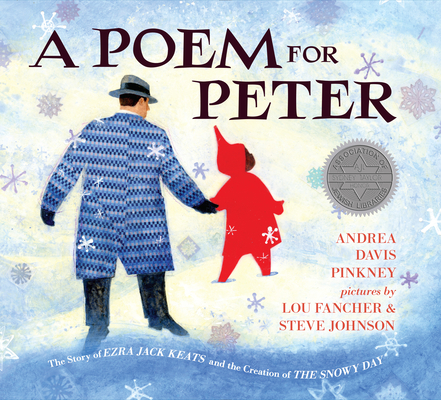 SS: A Poem for Peter.
SS: A Poem for Peter.
RVC: What’s your motto for picture book writing … that’s pithy enough for a t‑shirt or fortune cookie?
SS: I think I can! I think I can!
RVC: Three words that you hope come to mind when young readers encounter your books.
SS: Must know more!
RVC: Thanks a bunch, Suzanne!

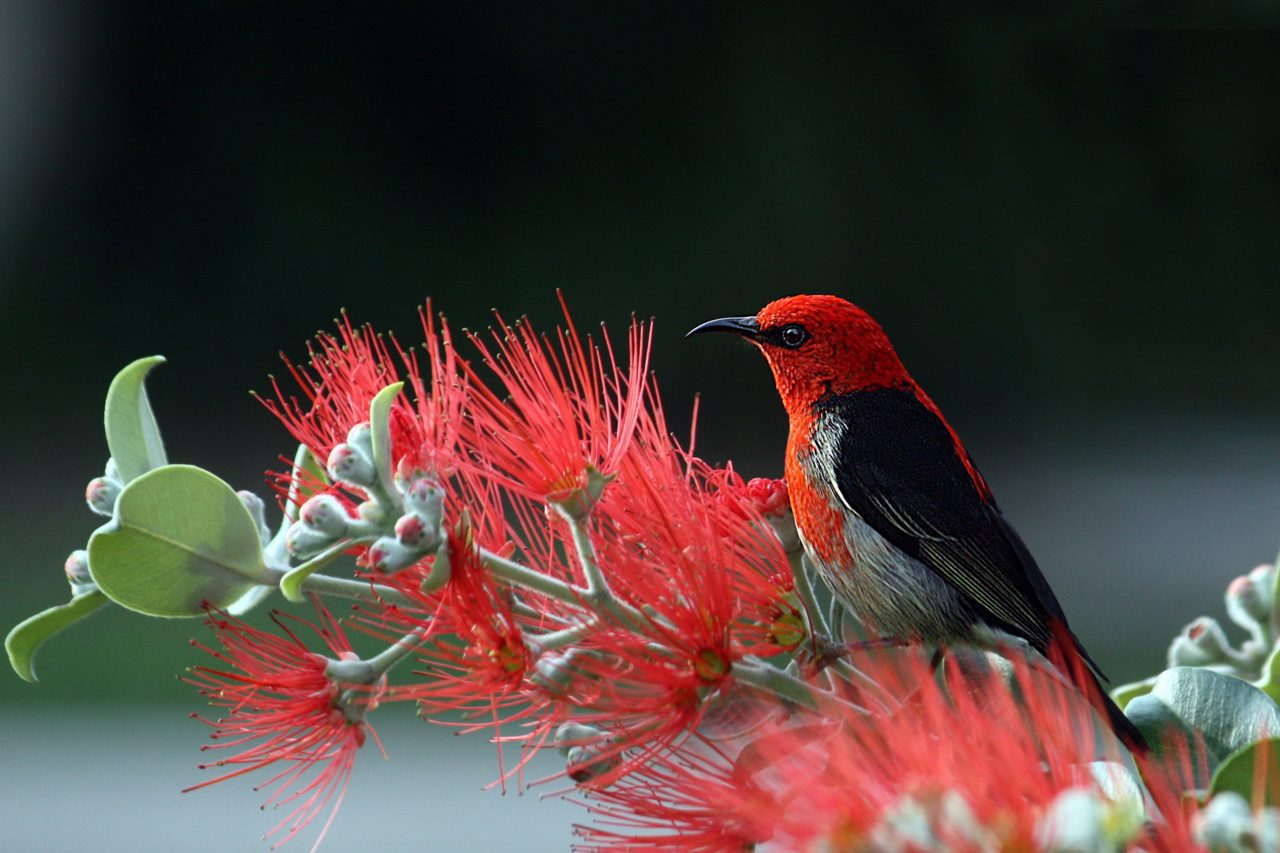



Great interview — thanks for sharing your insights 😊
Fabulous interview! Love all her books — I always learn something new and fascinating.
No photo of the famous Corduroy? 😉